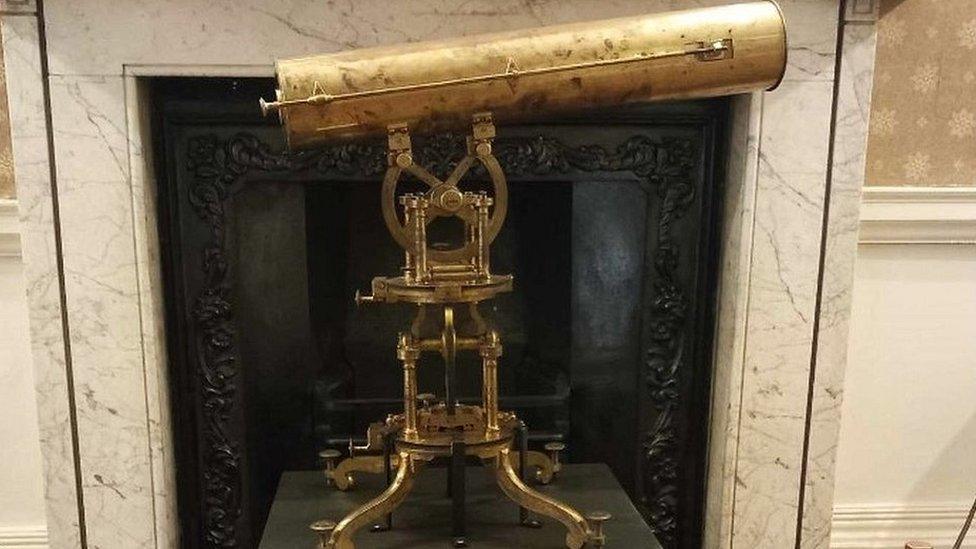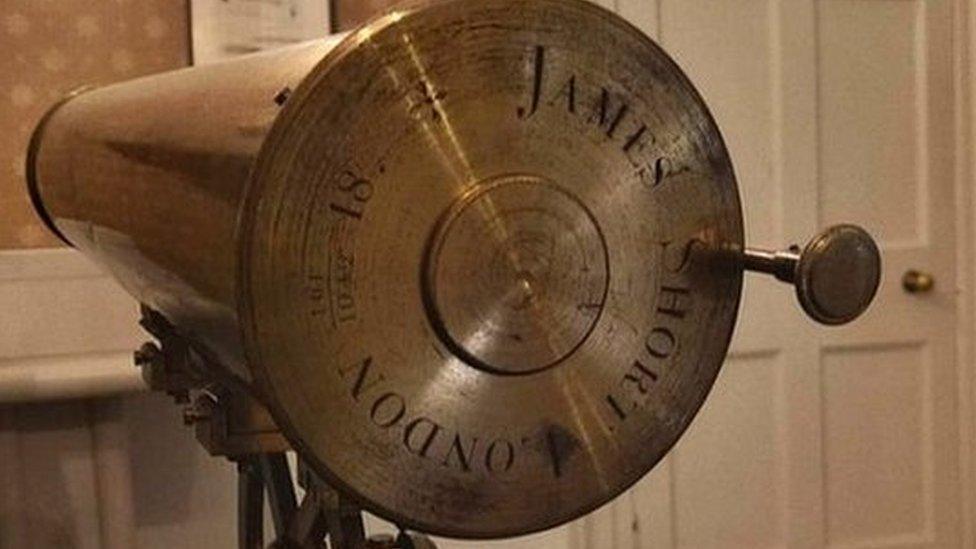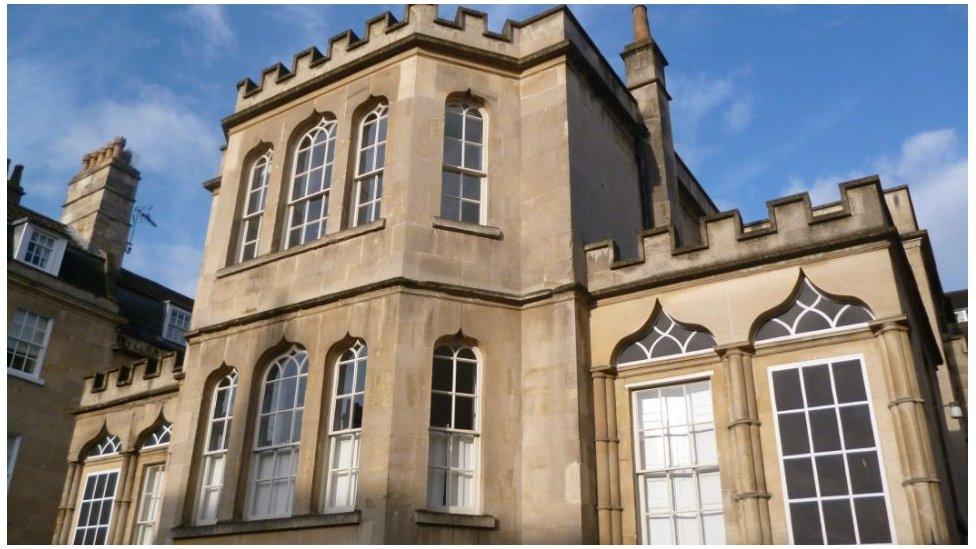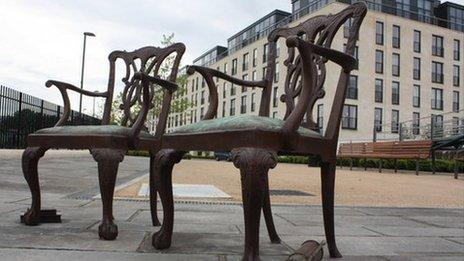Somerset museum shows 'finest' 18th-Century telescope
- Published

The Gregorian Reflector telescope was created by James Short, the pre-eminent telescope maker of the 18th Century
An 18th-Century telescope, considered the "finest" example of its kind, has gone on display in Somerset.
The Herschel Museum of Astronomy, in Bath, has acquired the Gregorian Reflector telescope on long-term loan.
The brass instrument was created between 1738-1768 by James Short, the pre-eminent telescope maker of the era.
Patrizia Ribul, director of museums for Bath Preservation Trust, external, said the acquisition of the telescope added "important context from the time".
Similar telescopes made by Mr Short were used to observe the transit of Venus in 1761 and 1769.
In his 30-year career Mr Short made at least 1,300 telescopes, which were sought after by observatories and customers around the world.

The telescope is constructed with two concave mirrors with a focal length of 18 inches, and sits on an equatorial mount
The museum is dedicated to the achievements of William and Caroline Herschel, who were distinguished astronomers and talented musicians.
"Our acquisitions policy is focused on objects that either belonged to them, or add important context from the time," said Ms Ribul.
"The James Short telescope provides visitors with an excellent example of the type of telescope that would have been known to William Herschel.
"The fact that William, with Caroline's assistance, went on to create telescopes superior even to this example by James Short, really underlines his expertise and dedication in the field of astronomy."

Follow BBC Somerset on Facebook, external and, X, external. Send your story ideas to us on email, external or via WhatsApp on 0800 313 4630, external.
Related topics
- Published30 March 2024

- Published7 June 2013

- Published13 May 2011